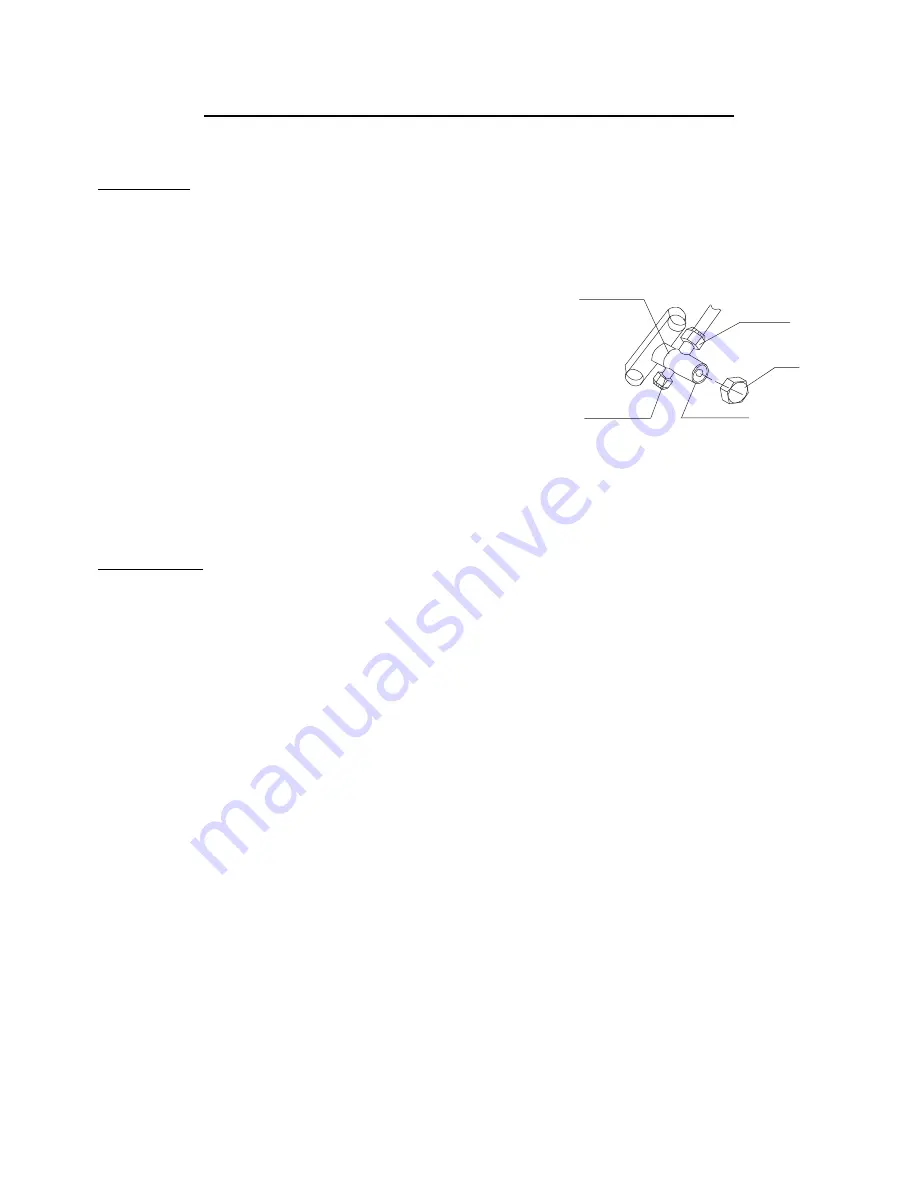
950-0289revB - 21 - July 22, 2022
EVACUATION OF THE REFRIGERATION TUBES AND INDOOR UNIT
After connecting the indoor and outdoor units, evacuate the air from the line set and the indoor unit as follows:
Leak Testing
Indoor units are nitrogen pre-charged, however they should be pressure tested before installation.
1. Connect the charging hoses to the low side of the manifold and the service port of the suction valve (See
figure 21b).
2. Connect the center hose of the manifold valve to a nitrogen source.
NOTE
: The nitrogen gas cylinder is used in a vertical standing position.
3. Charge system with nitrogen to 400 PSI and check for leaks,
using standard industry leak detection methods.
4. Pay attention to possible evaporator leaks that may have occurred
during shipping or installation.
5. Remove the nitrogen by opening the manifold valves.
Perform previous steps 1 to 4 on all indoor units. (See Figure 21)
Vacuum Purge
DO NOT OPEN SERVICE PORT VALVES
1. Turn on the vacuum pump. Evacuate system for about 30 minutes and confirm that the vacuum reading to
each indoor unit is 500 microns. After reaching 500 microns continue evacuation for approximately 2 hours.
2. Close all manifold valves and turn off the vacuum pump. After waiting for 30 minutes, confirm that the
vacuum reading has not changed. If the vacuum reading has changed, there is a leak that must be found and
repaired before continuing.
Perform previous steps 1 to 3 on all indoor units. Then proceed with the next step (3).
3. Remove the valve caps from all valves. Slowly open each liquid line fully using a hexagonal Allen wrench.
Use the same procedure on the suction valve. Open all valves to the full back seat position.
4. Securely tighten the caps back onto liquid and suction the valves.
5. Check for gas leaks from all connections. Test with an electronic leak detector, or with soapy water and
check for bubbles. Be sure to wipe off the soap with a clean cloth after leakage test.
Shut-off Valve
Flare Nut
Nut
Service Port
Valve Core
Figure 20






























